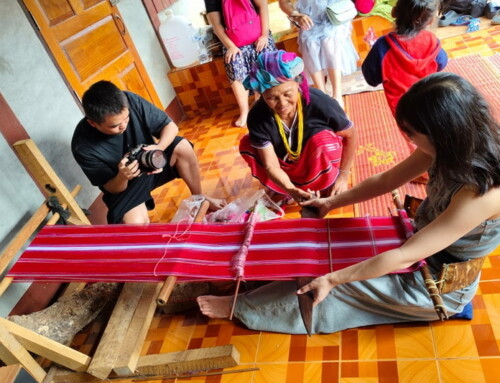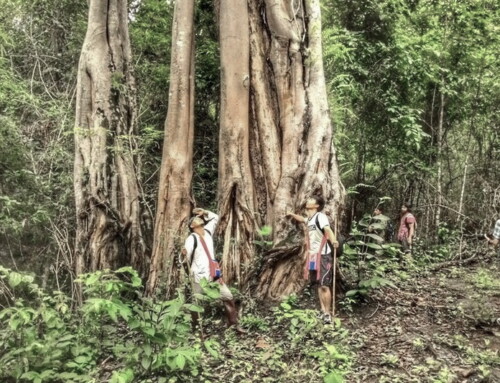Ban Muang Pon A Definitive Guide to Tai Yai Culture and Community in Mae Hong Son

An Unparalleled Exploration of Ban Muang Pon Village: Its Enduring Heritage, Vibrant Community, and Authentic Tourism Experiences
The Ancient Roots and Enduring Landscape of Ban Muang Pon
Nestled within the serene, verdant valleys of Khun Yuam District, Mae Hong Son province, Ban Muang Pon village stands as a profound testament to time-honored traditions and an unwavering connection to the land. This venerable settlement, approximately 12-13 kilometers south of Khun Yuam town along the scenic Highway 108, possesses a rich tapestry of history and cultural significance. The very name “Pon” is steeped in local etymological debate: some theories suggest a derivation from “Porn,” signifying a place of auspicious blessing, while others link it to “Phaya,” alluding to its historical status as a significant or “great city,” perhaps once presided over by a powerful ruler. Oral histories recount its initial founding by pioneering figures like Nai Noi Sri, establishing the community eastward of the Pon River at the foot of Doi Wiang. This geographical foundation has profoundly shaped the village’s identity, fostering a symbiotic relationship with its environment—a mosaic of fertile agricultural lands, vital waterways, and protective forests that continue to sustain its unique way of life.



The Social Fabric: Population, Kinship, and Tai Yai Identity
The demographic heart of Ban Muang Pon is unequivocally Tai Yai (Shan), an ethnic group renowned for its deep cultural roots and strong communal bonds. The village’s social structure is meticulously woven from intricate kinship systems, which serve as the bedrock for collective action, mutual support, and the meticulous preservation of their distinct cultural heritage. This profound social cohesion is not merely a characteristic but a dynamic force, underpinning the success of their community-based tourism initiatives, which empower the local population. Central to the Tai Yai identity in Muang Pon village is an unwavering devotion to Theravada Buddhism. This faith permeates every aspect of daily existence, from the quiet dignity of morning alms-giving to the vibrant spectacle of annual ceremonial cycles. The “Poy Lern Sip Ed” (Ok Phansa) festival, marking the end of Buddhist Lent, showcases the community’s profound piety through the elaborate construction and display of “Jong Para” (Buddha Castles), each a testament to their spiritual devotion and artistic prowess.
The Embodiment of Tai Yai Culture: Architecture, Crafts, and Cuisine
The cultural richness of the Tai Yai people is tangibly expressed through their material culture and daily practices. The village’s traditional architecture provides a captivating visual narrative: wooden houses, often featuring distinctive roofs ingeniously crafted from bai tong teung (Dipterocarpus obtusifolius leaves), exemplify a deep understanding of sustainable resource utilization passed down through generations. Beyond shelter, their craftsmanship is evident in a range of utilitarian and artistic creations. The iconic “Kup Tai” (Tai Yai hats), meticulously woven from bamboo, and the elegantly tailored “Suea Tai” (Tai Yai shirts) are not merely garments or accessories but symbols of cultural pride and skilled artistry. The culinary landscape of Ban Muang Pon offers an equally authentic immersion. Local delicacies, such as “Khao Puk”—a sweet, chewy mochi-like snack made from pounded sticky rice and often served with sesame seeds and palm sugar—provide a delicious insight into their traditional diet and communal food preparation.




The Rhythms of Life and Immersive Activities
The daily rhythm of Ban Muang Pon village is intrinsically linked to its agricultural cycles. The primary livelihoods revolve around the cultivation of rice, garlic, and peanuts, often employing traditional rotational farming methods that reflect a profound respect for the land. Mornings in the village typically begin with serene acts of reverence, as locals participate in alms-giving ceremonies, a deeply moving experience for both residents and visitors. For those seeking an authentic Mae Hong Son tour, the village offers a suite of immersive activities:
- Traditional Craft Workshops: Engage hands-on in the intricate process of creating a “Jong Para” (Buddha Castle) or witness the skillful weaving of “Goob Tai” hats by local artisans.
- Culinary Expeditions: Step into a traditional Tai House and participate in a cooking class, learning to prepare authentic Shan dishes for your own lunch, gaining a genuine taste of local life.
- Village Walks: Embark on guided strolls through the village, observing daily routines, traditional architecture, and the natural beauty that envelops the community.
An Unforgettable Cultural Program
The “Ban Muang Pon Khun Yuam community & cultural tour” is meticulously designed to provide a soft yet profound experience of local art, craft, traditional architecture, and the authentic cuisine of the Shan or Tai Yai people. The morning begins with a picturesque 1.5-hour drive along mountain roads, leading to Wat Muang Pon, the spiritual and communal heart of the village. Upon arrival, you’ll be greeted by an English-speaking tour guide and a local guide. The itinerary includes a village walk to observe local Shan art and craft, learning how to make “Tam Khon” (a Shan Buddhist symbol), and witnessing the intricate process of “Goob Tai” weaving. A highlight is the visit to a traditional Tai House for a hands-on Shan cooking lesson, culminating in a delicious local lunch. The afternoon continues with insights into traditional Tai Yai cloth making and various handicraft groups, showcasing the enduring local wisdom. This comprehensive tour Mae Hong Son from Chiang Mai offers a unique blend of cultural immersion and scenic beauty.


Village Attractions: Points of Interest
- Wat Muang Pon: The central temple, a spiritual anchor and architectural gem, reflecting the unique Tai Yai style.
- Traditional Tai Houses: Numerous well-preserved wooden houses, some with the iconic bai tong teung roofs, offer insights into historical living.
- Morning Market: A vibrant hub for authentic local foods, fresh produce, and a glimpse into daily village commerce.
- Artisan Workshops: Opportunities to observe and learn about the creation of significant Tai Yai crafts, including “Kup Tai,” “Suea Tai,” and “Jong Para.”
Navigating Your Journey to Ban Muang Pon
Ban Muang Pon is conveniently situated along Highway 108, approximately 75 kilometers south of Mae Hong Son city and 12-13 kilometers from Khun Yuam town. The journey to this region is famously part of the Mae Hong Son loop tour package, which offers multiple routes from Chiang Mai. Travelers can opt for the upper route via Pai, return via the lower route, or take the lower route from Mae Sariang up to Mae Hong Son city and then return via Pai to Chiang Mai. From Chiang Mai, direct minivans or buses ply this route (approx. 5-6 hours), passing directly by Ban Muang Pon village. From Mae Hong Son city, it’s roughly an hour’s drive by private car, local songthaew, or public transport heading towards Khun Yuam or Mae Sariang.
Unearth profound cultural insights; secure your authentic Ban Muang Pon experience today!
Nearby Regional Treasures
Bua Tong Fields at Doi Mae U-Kho
During late autumn and early winter (typically November), this site transforms into a breathtaking expanse of golden Mexican sunflowers, a vibrant natural spectacle.
Namtok Mae Surin National Park
Home to the majestic Mae Surin Waterfall, a towering single-tier cascade plunging from a great height, surrounded by lush forests ideal for Mae Hong Son trekking.









Leave A Comment